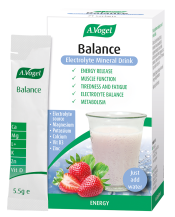Why you should stretch before you cycle
Cycling is not a natural movement that we are evolved to complete, so it is even more important to watch out for muscle tightness, potential injuries, and postural problems. Cycling doesn’t incorporate any lateral movements or rotation, so it’s important to think about incorporating these into your warm ups and cool downs to prevent an imbalance of flexibility. For now though, we’ll take a look at the best stretches to work into the muscles that you do use while cycling.
Hip flexors
First up are the hip flexors! The action of peddling and raising the legs as high as the hips, is a lot to ask from the hip flexors. Your hips never open when you are on your bike; they never straighten or rotate to open the hip joint. So it is extremely natural for cyclists to feel tight in the hips. Tightening of the hip rotators can cause pain in the glutes. Hip flexor tightness can also result in an anterior pelvic tilt and overly arched lower back, so try to spend a little bit of time focusing on stretching them!
Hip flexor stretch: low lunge
From a standing position take a large step forward with the right leg. Sink down into the hips and gently lower the left knee down to the ground and flatten the left foot. If you have sensitive knees or knee pain, place a blanket or cushion underneath the left knee for extra support. Press your hips forward until you feel the stretch in your left hip flexor. Repeat on the other side.

Calves
Tight calves can be caused from overusing the muscles and from not warming up before you hop on your bike. They can be exacerbated if your bike saddle and handlebars are not in alignment with your height too. When we cycle our calves work together with the hamstrings and quadriceps to allow your foot to peddle.
The calf muscles (the gastrocnemius and soleus muscles) are also responsible for pulling our heel up to allow forward movement. The bottom of the calf muscles are attached to the Achilles tendon. The Achilles tendon is a tough band of fibrous tissue that connects the calf muscles to the heel bone. Therefore, if the calves are tight, the Achilles tendon will also be tight and vice versa.

Tight calves and Achilles tendons can prevent the full motion of the foot and ankle joints, this can impair your cycling performance because good ankle mobility is necessary to push and pull the peddles. It can force cyclists to practice a toe-down peddle that produces less force than a flatter foot would.
Calf stretch: calf stretch against the wall
Stand facing the wall with the toes pointing forwards. Bring the palms of your hands to rest shoulder height on the wall. Step back with the right foot, around half a metre. Make sure your toes are still facing the wall and both feet are completely flat on the ground. Slowly lean over your front leg towards the wall, keeping your back knee straight (and both feet firmly planted!). You should feel this stretch in the gastrocnemius (the large calf muscle) and, if you bend your back knee slightly, you will feel the stretch in your soleus (smaller calf muscle). Hold for 20 seconds then switch sides.
Shoulders, neck and back
Tight shoulders and a tight neck are quite common among cyclists so this is a good area to stretch out. Cycling puts your neck in an extended position, holding this position, especially for long periods of time, can result in neck pain. Tight shoulders can be caused from the position of you handlebars in relation to your saddle. Too much weight in the hands means that your shoulders and arms have to work to stabilise the extra weight.
When you are cycling your body is in an unnatural position and your back muscles have to work extra hard to keep you there, which is why cycling can also cause tight back muscles. Not to worry – I have an awesome stretch that targets all three!
Neck, back and shoulder stretch: cat/cow
Come onto your hands and knees making sure that the hands are underneath the shoulders and knees are underneath the hips. On an exhale arch your back like an angry cat and on an inhale starting at the base of the spine begin to dip your tummy towards the ground.
Quads
Cycling is a repetitive action carried out through a limited range of motion, meaning that the legs are never fully extended or contracted. The quadriceps and the gluteal muscles are the primary muscles you use to ride a bike and they are often the ones that get fatigued and sore first. This sensation is thought to be caused by a decreased flow of calcium to muscles. Stretching and gradually building endurance and strength in the quadriceps can help to prevent fatigue while cycling.
Quad stretch: quad stretch against the wall
From a kneeling position, scoot your right knee as far back towards the wall as you can and place the shin and top of the right foot against the wall. Once you feel stable and only as long as it doesn’t feel too tight, rearrange your left leg so that the sole of the foot is on the floor and the knee is at a 90 degree angle and in line with the ankle. If it feels comfortable, gradually take your hands off of the floor and place them gently on your left thigh and straighten your back.









